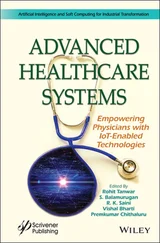From the initial era of the drug delivery system to date, still the major challenge and limitation for the effective delivery of xenobiotics to central nervous system-related deficiencies and diseases are due to the biological membrane permeability through the blood brain barrier (BBB) [55]. They allow smaller and tiny hydrophilic compounds having a mass of 150 Da and lesser; similarly, compounds that are highly lipophilic with a mass of 500 Da are capable of diffusing through the BBB. Therefore, the general route of drug delivery system is not suitable to treat neurodegenerative diseases such as Parkinson’s, Alzheimer’s, Huntington’s, other CNS-related disorders, deficiencies in genetics, and several types of brain tumors. Nanotechnology provides suitable biodegradable, biocompatible, non-immunogenic, and non-inflammatory carriers for the therapeutic compound showing good safety, efficacy, efficiency, and site-targeted and reduced toxicity [56]. For example, in specific to the Alzheimer’s disease prevention, random studies have used traditional approaches to estimate the mono- or poly-intervention efficacy of patient treatment outcomes like cognitive functioning, biomarkers, and imaging techniques. On the other hand, these studies are conducted majorly based on the “one size fits all” principle to target without any accountability to genetic and non-genetic factors (diet, lifestyle, exercise, etc.). Prevention of Dementia by Intensive Vascular Care and Multidomain Alzheimer Prevention Trial has not been precipitated with any cognitive function with interventions associated with lifestyle including physical activity, exercise, management of cognition and comorbidity, nutrition, and diet. The study was conducted in the population where the individual has already been exposed to a minor level of decline in cognition or dementia. The development of Alzheimer’s in the brain has been apparently identified with clinical symptoms decades back. Therefore, the population for studying will not be optimized to promote by modifications in lifestyle as each and every individual patient goes through the decline of cognition beyond the prevention window [57]. The FINGER (Finnish Geriatric Intervention Study to Prevent Cognitive Impairment and Disability) is the initial stepping multicenter randomized clinical trial (RCT) that looks into the influence of lifestyle intervention towards cognitive impairment risks in individuals. They report that the trials conducted were regardless of demographical status, cardiac risks, and baseline cognition. They also carried out further sub-analysis that explores the impacts of specific genetic factors, apolipoprotein E, and methylenetetrahydrofolate reductase (MTHFR) interference in lifestyle. A result of sub-analysis shows a significant difference in the treatment and prevention strategies of Alzheimer’s disease leading to the employment of a precision medicinal approach [58].
There still exists a major challenge in targeting the subcellular organelles for drugs exhibiting their potential area of action in the cells or tissues. Nanoparticles help in targeting by binding to the substrates present on the surface of the cells to deliver the drug or by endocytosis. The passive targeted nanoparticles loaded with drug molecules serve an immense priority to preferentially accumulate the chemodrug at the solid tumor tissues. Similarly, site-specific or target selective delivery of drug can be cast by surface modification of active nanoparticles targeting the receptor. These techniques enhance the drug bioavailability at the subcellular organelles and produce therapeutic actions [59].
The recent development in the field of personalized medicine includes the diagnosis and better treatment of cancer. This killer disorder in patients treated with the usually available strategies can only provide a chance to survive and a rare case for further cure. Adopting personalized medicine for cancer therapy is one of the promising ways to improve the chance of surviving against the tumor [60]. However, the possibility is only when the patient is provided with the right drug, at the right dose, by the right dosage form, to the right target and at the right time. This requires the revolutionary discovery cracking the existing drug therapy. By this application, the possibility of side effects and ADR can be drastically minimized. There are a lot of approaches through which nanotechnology can be applicable to the development of personalized medicines, initially when contributing to the process of diagnosis is amplified, made simple, and patient-friendly. The most crucial part of personalized therapy is the analysis of genetic data of the particular individual, in particular in treating cancerous cells as they process a high variation in genetic signaling [61]. High-throughput screening of DNA sequences using nanopores is one of the best techniques to find the genetic data of the individual patient for that particular disease that helps in rapid selection of drug targets [62].
With the employment of nanostructures constructed by using carbon (carbon nanotubes) and graphene with their unique property of mechanical and electronic character, an active nanobiosensor can be developed that can detect even a lesser potent concentration of biomarkers that even a very few molecules can be estimated [63]. These nanotechnologies are combined to form a readily portable diagnostic kit—“lab on a chip” serves rapid testing and minimal biological samples to process. These devices provide an elaborated advantage by speedy diagnosis for the cancer patients at crucial stages—where earlier treatment can increase the chances of patient survival [64].
On the other hand, the tropical treatment of diabetic foot ulcer can be well facilitated with the nanoformulation facilitated by incorporating them in scaffold for their better efficacy at the site. The researcher has concluded that the incorporation of nanoformulation in the topical scaffold application promises higher bioavailability and good efficiency and reduces the cost of therapy and increases the patient acceptance leading to personalization of medicament depending upon the area of application and need [65].
Worldwide patient-centric personalized medicine is seeking a huge potential in clinical sector, though basic research in developing countries is not up to par to that of Western countries. The ever-developing fields of nanotechnology, nanomedicines, nanobiotechnology, and genomic studies in the continuous multidisciplinary research open up a new trend set in developing personalized and customized drug delivery systems. Still there are various pitfalls and limitations such as toxicity, bioethical issues, safety, pharmaceutical development, and physiological challenges that are associated with the available technologies that paved the way to a new set of objectives and goals for future scientists to research the emerging technologies for better and more patient-centric therapy. On the other hand, the nanotechnology and personalized medicine are still devoid of enough regulatory guidelines and data with respect to safety of the materials utilized in the formulation developed and the medications. In the forthcoming days, the nanotechnology serves an advantage of affecting the route of administration starting from oral to injectables offering significantly higher impact in the concept of personalization and customization of medicines, drug delivery, and therapy.
The two major factors that affect the personalized medicine application are the choice of drug and technology tool to opt as a part of genetic testing and the validation of the choice of drug and the tool. As discussed above, the wise use of nanotechnology tools in customizing drug delivery improves the currently existing drug therapy by increasing the patient compliances and reducing the adverse drug reaction and side effects. It also emphasizes the need of pharmacogenetic and pharmacogenomic data for a better excise of the diagnostic, prevention, and treatment models present. An implication of nanotechnological tools in personalized medicines is the initial growth in the field of clinical and patient care approaches. Still, various undiscovered technologies by utilizing genetic data that are available for decades are the future upcoming scopes for better therapy of diseases. The collaborated researches combining nanotechnologies, biotechnology, and the concept of personalized medicines yields a patient-centric diagnosis and treatment technology. From the traditionally available conventional dosage forms such as tablets, capsules, and ointments, solutions are being customized by introducing nanodrug delivery incorporated into the available delivery systems in accordance with the patient’s diagnostic needs for better accurate treatment. In the future, the booming field of personalized medicines and the existing nanotechnology approach an increased application for the treatment of patient-centric drug delivery.
Читать дальше












